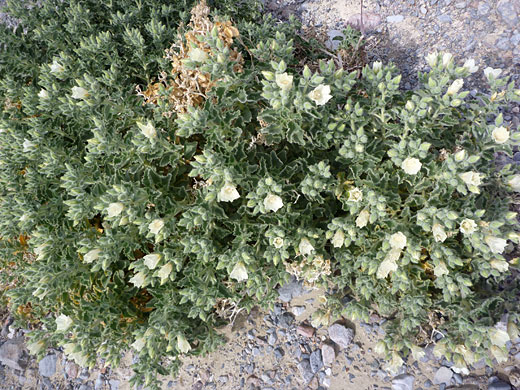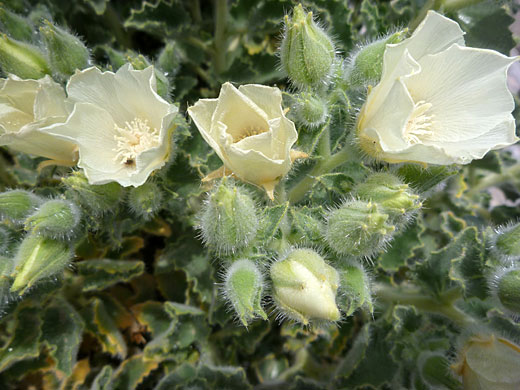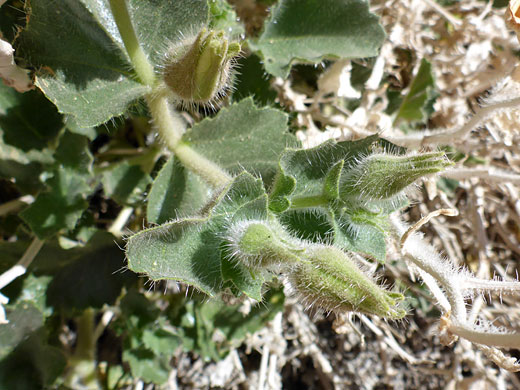
White flower of eucnide urens (desert rock nettle), along the road to Hole-in-the-Wall, Death Valley
Common names:
Desert rock nettle, velcro plant, desert stingbush
Family:
Scientific name:
Eucnide urens
Main flower color:
Range:
The Mojave Desert and northwest Arizona
Height:
Up to 2 feet
Habitat:
Well drained, desert locations; dry washes, cliff faces. Up to 4,000 feet
Leaves:
Ovate, hairy, with toothed, wrinkled edges; up to 2.5 inches long
Season:
February to June
Long, thin, sharp, stinging bristles cover the buds, leaves and stems of eucnide urens, the desert rock nettle. The plant forms sizeable clumps, staying fairly close to the ground, with flowers creating dense clusters along the upper few inches of the stems; mature specimens may have hundreds of blooms. Each flower is up to 2 inches across, composed of five white or pale cream petals, slightly darker at the base, centered on a cluster of up to 50 white stamens around a white style, similar in length. Anthers are shorter than the filaments.
Plants often retain clusters of dead, light brown leaves and stems from previous years. The flowers are a favored food of desert bighorn sheep, despite the stinging hairs just underneath.
Plants often retain clusters of dead, light brown leaves and stems from previous years. The flowers are a favored food of desert bighorn sheep, despite the stinging hairs just underneath.
All Contents © Copyright The American Southwest | Comments and Questions | Contribute | Site Map






